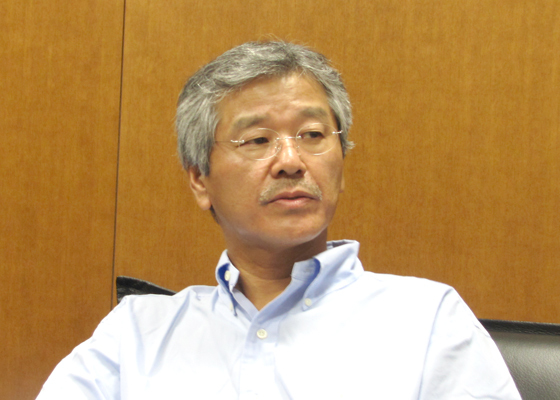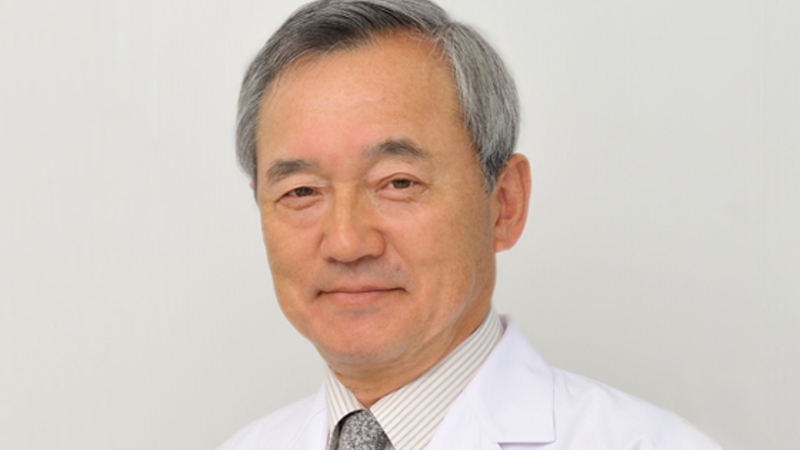Dr. Osamu Kato, a pioneer and inventor of techniques of percutaneous coronary intervention for chronic total occlusion (CTO-PCI), is one of the most respectable interventional cardiologists, not only in the country but all over the world. In this two-part interview, TCROSS NEWS learns how and why his CTO-PCI techniques came to form through his personal history.
Profile: Dr. Osamu Kato (Part 2)

How did you get started in PTCA?
If there was ever a case of bypass surgery or PTCA, I would refer the patient to Dr. Kobayashi at the Osaka Medical Center for Adult Diseases since at that time I felt that it wasn’t a treatment that I would perform myself. PTCR was just starting to become popular, so we worked to build a system that would allow us to perform it around the clock at Sakurabashi Watanabe Hospital.
After that, the number of CAG cases continued to increase and we were requested to perform PTCA. However, when I saw how highly calcified and hardened the coronary arteries of patients who had died of cardiac rupture or heart failure were, I couldn’t believe that such vessels could be simply expanded by balloons. I felt that PTCA was only a temporary fad.
In 1984, a newspaper reported that Dr. Shigeru Saito of Kansai Deaf Hospital (now Shonan Kamakura General Hospital) had performed 60 cases of PTCA. My supervisor wrote a letter of introduction for us to visit Dr. Nobuyoshi and Dr. Saito at Kokura Memorial Hospital because he wanted to perform PTCA at Sakurabashi Watanabe Hospital as well. However, the necessary medical equipment such as balloon catheters were not readily available at the time, so it was not until October of the same year that the first case was performed. I still remember that case vividly. It was a sub-completely occluded lesion in the proximal part of the LAD in a woman.
What made you decide to treat chronic total occlusion (CTO)?
I was doing research on the pathogenesis of myocardial infarctions, and I was convinced that CTOs affected the long-term prognosis of ischemic hearts, so I thought that PTCA would only be meaningful if I could treat CTOs.
Sakurabashi Watanabe Hospital was a very conservative institution, and prior to the establishment of the 24-hour PTCR, the only treatment available was the use of intravenous thrombolytic agents in large doses. This meant the patient was hospitalized for about a month to rest. Nearly half of the infarcted responsible lesions were discharged with occlusion, so there were many patients whose CTO had developed when angiography was taken one or two months later. Therefore, I had a lot of experience in treating CTO lesions that had been occluded for several months, and as a matter of course, I was able to achieve a higher success rate than in the beginning.
Our current devices and techniques had not yet been established then, so it was a time when Dr. Tamai's CTO success rate of over 50% was considered amazing. He was surprised when he heard about my success rate, but in the end, the CTO I was treating and the CTO he was treating were of different types. The CTO that Dr. Tamai was treating was not a post-AMI CTO, but a true CTO that seemed to have been blocked for years.
My biggest setback came when I was moved to the Osaka Medical Center for Adult Diseases. At Sakurabashi Watanabe Hospital, I had experienced 500-600 cases of CTO-PCI, and there were no other surgeons who were particularly active in treating the condition, so I felt that I was on my own in the CTO-PCI field. However, the Osaka Medical Center for Adult Diseases was the complete opposite of Sakurabashi Watanabe Hospital, and most of the patients were suffering from chronic ischemic heart disease. Moreover, there were many patients with extremely complicated CTOs, such as familial hyperlipidemia. I was quite shocked to see that the 70-80% success rate I had been getting in the past was rapidly declining (laughs). That's when I hit the nail on the head and really started to think. I continued to think day and night about how I could improve the success rate and help as many patients as possible. It’s no exaggeration to say that this experience in 1990 became the starting point of what I am doing now.
From whom did you learn PTCA?
I didn’t receive any hands-on instruction in PTCA from any specific person. In fact, there’s no one in particular that I would even call a master of PTCA. There were some impressive people like Dr. Hartzler in the world, but in the early 1980s, I don't think Japan as a whole was quite at that level.
Please tell us about the major encounters you have had.
My time at the Osaka Medical Center for Adult Diseases was my true battle with CTO. It was during this period that I met Dr. Takahiko Suzuki (who is currently working at the Toyohashi Heart Center) and Dr. Tamai at the Toyohashi East Hospital.
This encounter was a big deal for me. We assumed that we would be able to overcome restenosis and complications in the future, but the three of us had a common understanding that only the CTO would remain until the end. In the end, we spent 20 years creating the prototype of the current CTO-PCI and have continued the live demonstration course since.
It was common practice to invite prominent doctors from Europe and the United States to give lectures at scientific meetings in Japan, but the live demonstration courses we organized became a reality where we were the lecturers and the ones who instructed other vascular interventionists around the world. As long as we were practicing what we believed to be right, we were confident that we would be recognized someday, and the result of our global recognition is the CTO Club and CCT of today.
Interviewed in 2011
ご注意 当サイト内の全ての記事と動画の転載・転送はご遠慮ください。なお、法律上保護されたコンテンツの無許可の転載、複製、転用等は、当該コンテンツの権利者等から損害賠償請求その他の法的手続を申し立てられ、事案によっては処罰される可能性、また、故意にそれらを受け取った場合も同様の措置を受ける可能性がございます。ご不明な点がございましたら当社までご連絡ください。




